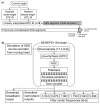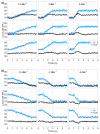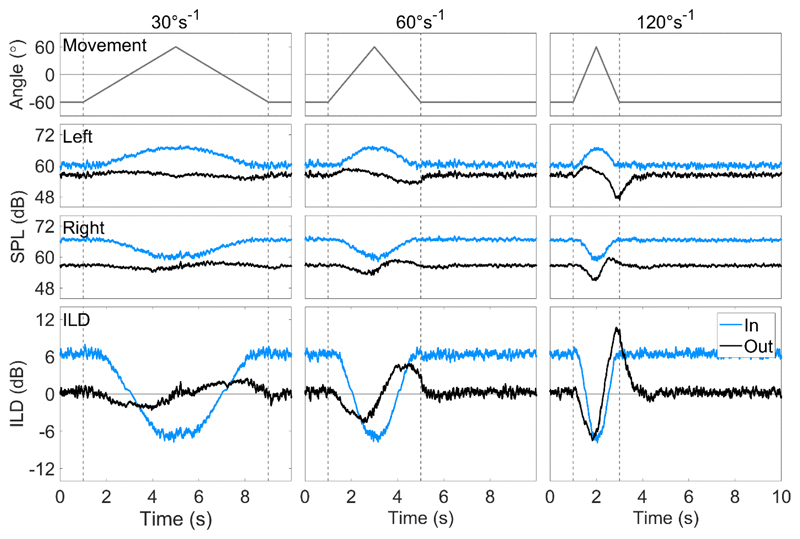Simulations of the effect of unlinked cochlear-implant automatic gain control and head movement on interaural level differences
- PMID: 31067937
- PMCID: PMC6711771
- DOI: 10.1121/1.5093623
Simulations of the effect of unlinked cochlear-implant automatic gain control and head movement on interaural level differences
Abstract
This study simulated the effect of unlinked automatic gain control (AGC) and head movement on the output levels and resulting inter-aural level differences (ILDs) produced by bilateral cochlear implant (CI) processors. The angular extent and velocity of the head movements were varied in order to observe the interaction between unlinked AGC and head movement. Static, broadband input ILDs were greatly reduced by the high-ratio, slow-time-constant AGC used. The size of head-movement-induced dynamic ILDs depended more on the velocity and angular extent of the head movement than on the angular position of the source. The profiles of the dynamic, broadband output ILDs were very different from the dynamic, broadband input ILD profiles. Short-duration, high-velocity head movements resulted in dynamic output ILDs that continued to change after head movement had stopped. Analysis of narrowband, single-channel ILDs showed that static output ILDs were reduced across all frequencies, producing low-frequency ILDs of the opposite sign to the high-frequency ILDs. During head movements, low- and high-frequency ILDs also changed with opposite sign. The results showed that the ILDs presented to bilateral CI listeners during head turns were highly distorted by the interaction of the bilateral, unlinked AGC and the level changes induced by head movement.
Figures







References
-
- Advanced Bionics. Bionic Ear Programming System Plus. Valencia, CA, USA: 2014.
-
- Advanced Bionics. Soundwave 2.3. Valencia, CA, USA: 2015.
-
- Agterberg M. Hearing with acoustic hearing implants, proposal multicenter study towards treatment options for patients with a contra indication for hearing aids. Journal of Hearing Science. 2018;8
-
- ANSI. ANSI S3.22-2003: Specification of hearing aid characteristics. American National Standards Institute; New York: 2003.
Publication types
Grants and funding
LinkOut - more resources
Full Text Sources

